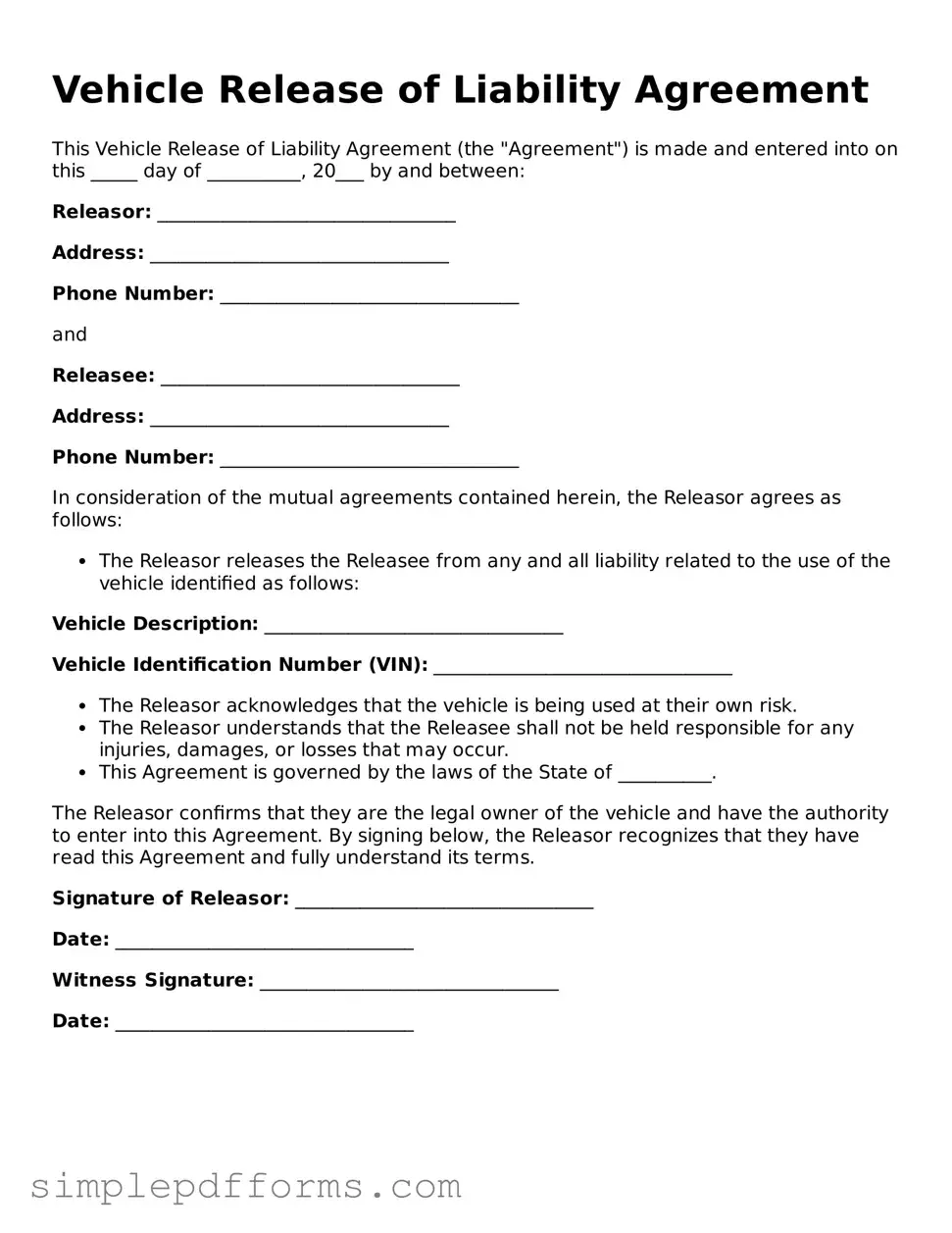Vehicle Release of Liability Agreement
This Vehicle Release of Liability Agreement (the "Agreement") is made and entered into on this _____ day of __________, 20___ by and between:
Releasor: ________________________________
Address: ________________________________
Phone Number: ________________________________
and
Releasee: ________________________________
Address: ________________________________
Phone Number: ________________________________
In consideration of the mutual agreements contained herein, the Releasor agrees as follows:
- The Releasor releases the Releasee from any and all liability related to the use of the vehicle identified as follows:
Vehicle Description: ________________________________
Vehicle Identification Number (VIN): ________________________________
- The Releasor acknowledges that the vehicle is being used at their own risk.
- The Releasor understands that the Releasee shall not be held responsible for any injuries, damages, or losses that may occur.
- This Agreement is governed by the laws of the State of __________.
The Releasor confirms that they are the legal owner of the vehicle and have the authority to enter into this Agreement. By signing below, the Releasor recognizes that they have read this Agreement and fully understand its terms.
Signature of Releasor: ________________________________
Date: ________________________________
Witness Signature: ________________________________
Date: ________________________________
